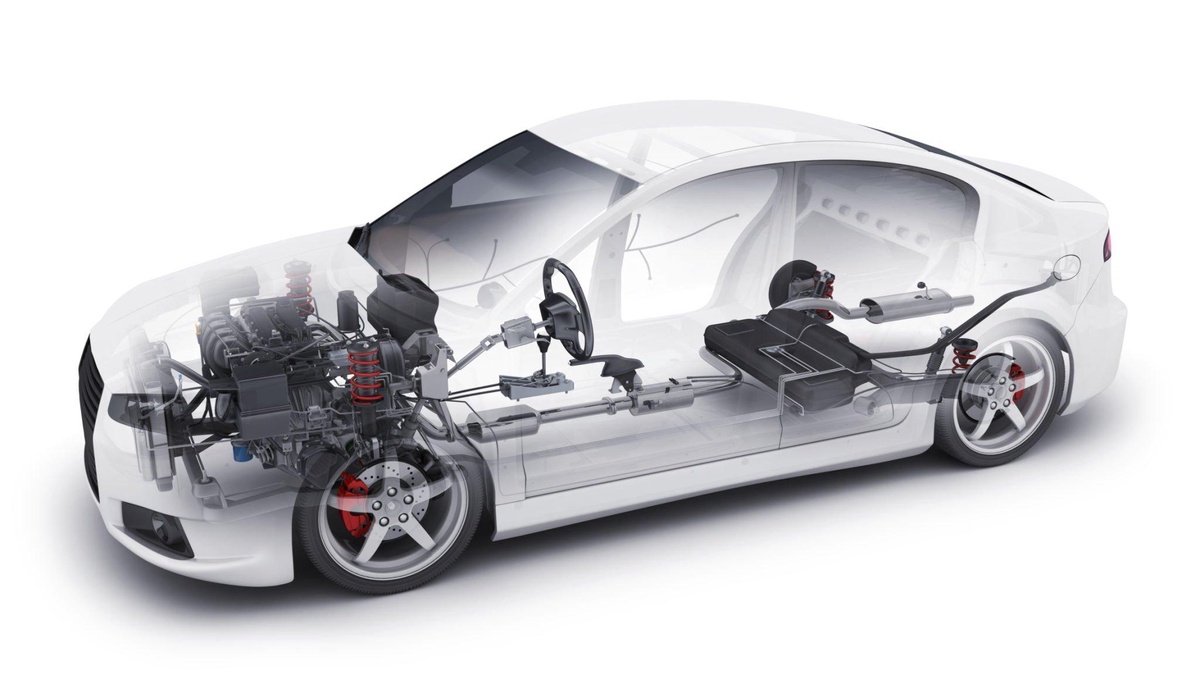Have you ever wondered how your car's engine breathes? Well, let's dive into the world of air intakes and explore the different types that help your automobile's engine perform at its best. In this article, we'll break down the various types of air intake systems, from simple designs to more advanced technologies. So buckle up as we embark on a journey to understand the heart and lungs of your vehicle!
Types of Air Intake: The Basics
Imagine your car's engine as a human body—just like we need oxygen to survive, an engine needs air to function efficiently. The air intake system is like its respiratory system, ensuring a healthy flow of oxygen-rich air for combustion. There are various types of air intake systems, each with its unique characteristics and benefits.
Traditional Carbureted Intake
In the early days of automobiles, carbureted engines were the norm. A carburetor mixed fuel and air in a specific ratio before sending it into the engine. This type of air intake was simple but lacked precision, often resulting in fuel inefficiency and emissions issues.
Fuel Injection System
With advancements in technology came the fuel injection system. This innovation improved fuel efficiency and reduced emissions by precisely controlling the air-fuel mixture. Electronic sensors analyze data and adjust the mixture accordingly, optimizing engine performance.
Turbochargers and Superchargers
Ever heard of giving your engine a power boost? Turbochargers and superchargers do just that. These forced induction systems compress the incoming air, allowing more air molecules to enter the engine, resulting in increased power output. Turbochargers are powered by exhaust gases, while superchargers are driven by the engine's crankshaft.
Variable Intake Valve Timing
Engines are designed to perform well across various RPM ranges. Variable intake valve timing adjusts when the engine's intake valves open and close, optimizing performance at low and high speeds. This technology enhances torque and horsepower while improving fuel efficiency.
Cold Air Intake
Just like we feel invigorated in cool, fresh air, engines perform better with cold, dense air. Cold air intakes draw air from outside the engine compartment, providing a cooler and more oxygen-rich supply. This results in improved combustion and increased power.
Ram Air Intake
Ever noticed those scoops on some cars' hoods? That's the ram air intake system. It captures high-speed air and directs it into the engine, creating a pressurized effect. This enhances power at high speeds, giving you an extra kick when you need it.
Short Ram Intake
Similar to the ram air intake, the short ram intake system improves airflow but doesn't utilize the high-speed air pressurization. It's a simpler design that enhances throttle response and produces a throaty engine sound.
Long Tube Intake
If you're aiming for increased torque, a long tube intake might be your go-to choice. It focuses on mid-range power and torque by optimizing airflow velocity. This type of intake is favored in vehicles where quick acceleration is more important than top speed.
Aftermarket Performance Intakes
Car enthusiasts often look to aftermarket options to boost performance. Aftermarket performance intakes offer improved airflow, allowing the engine to breathe better and produce more power. They come in various designs, from cold air intakes to short ram intakes, catering to different performance goals.
Intake Manifold Design
The intake manifold plays a crucial role in distributing the air-fuel mixture to the cylinders. Its design affects the balance of power and torque across different RPM ranges. Manufacturers tweak the manifold design to optimize performance for specific driving conditions.
Air Filters: More Than Just Dust Protection
Air filters are like the engine's lungs—they keep out dirt, debris, and contaminants. However, not all air filters are created equal. Performance air filters offer better airflow while maintaining effective filtration, striking a balance between engine protection and performance enhancement.
The Future of Air Intake Systems
As we delve into the world of air intake systems, it's important to highlight the advancements that continue to shape the automotive industry. One such innovation is the Eventuri air intake system, which has gained attention for its cutting-edge design and performance enhancements.
Eventuri represents a new generation of air intake technology, combining sleek aesthetics with precision engineering. Unlike traditional intake systems, which often compromise on airflow dynamics, Eventuri takes a holistic approach to optimize engine performance and efficiency.
The Importance of Regular Maintenance
Now that we've explored various air intake systems, it's essential to highlight the significance of maintenance. Clean air filters, sensors, and intake components ensure optimal performance. Neglecting maintenance can lead to reduced efficiency, power loss, and increased emissions.
Conclusion
In the realm of automobiles, air intake systems are the unsung heroes that contribute to engine efficiency and power. From traditional carbureted intakes to advanced variable valve timing systems, each type plays a crucial role. Understanding these systems empowers you to make informed decisions about your vehicle's performance enhancements. So next time you hit the road, remember that it's not just the engine—it's the air intake system that's working tirelessly to provide you with a smooth and powerful ride.
FAQs
Q1: What is the purpose of an air intake system?
A1: An air intake system supplies your car's engine with the necessary oxygen for combustion, ensuring efficient performance.
Q2: How does a cold air intake improve power?
A2: Cold air intakes draw cooler, denser air into the engine, resulting in better combustion and increased power output.
Q3: Can I install an aftermarket air intake myself?
A3: Yes, many aftermarket air intake kits come with detailed instructions for DIY installation. However, professional installation is recommended for optimal results.
Q4: Are turbochargers and superchargers the same?
A4: Turbochargers are powered by exhaust gases, while superchargers are driven by the engine's crankshaft. They both provide forced induction but operate differently.
Q5: How often should I replace my air filter?
A5: It's recommended to replace your air filter every 15,000 to 30,000 miles, or as specified in your vehicle's manual, to maintain optimal engine performance.


No comments yet